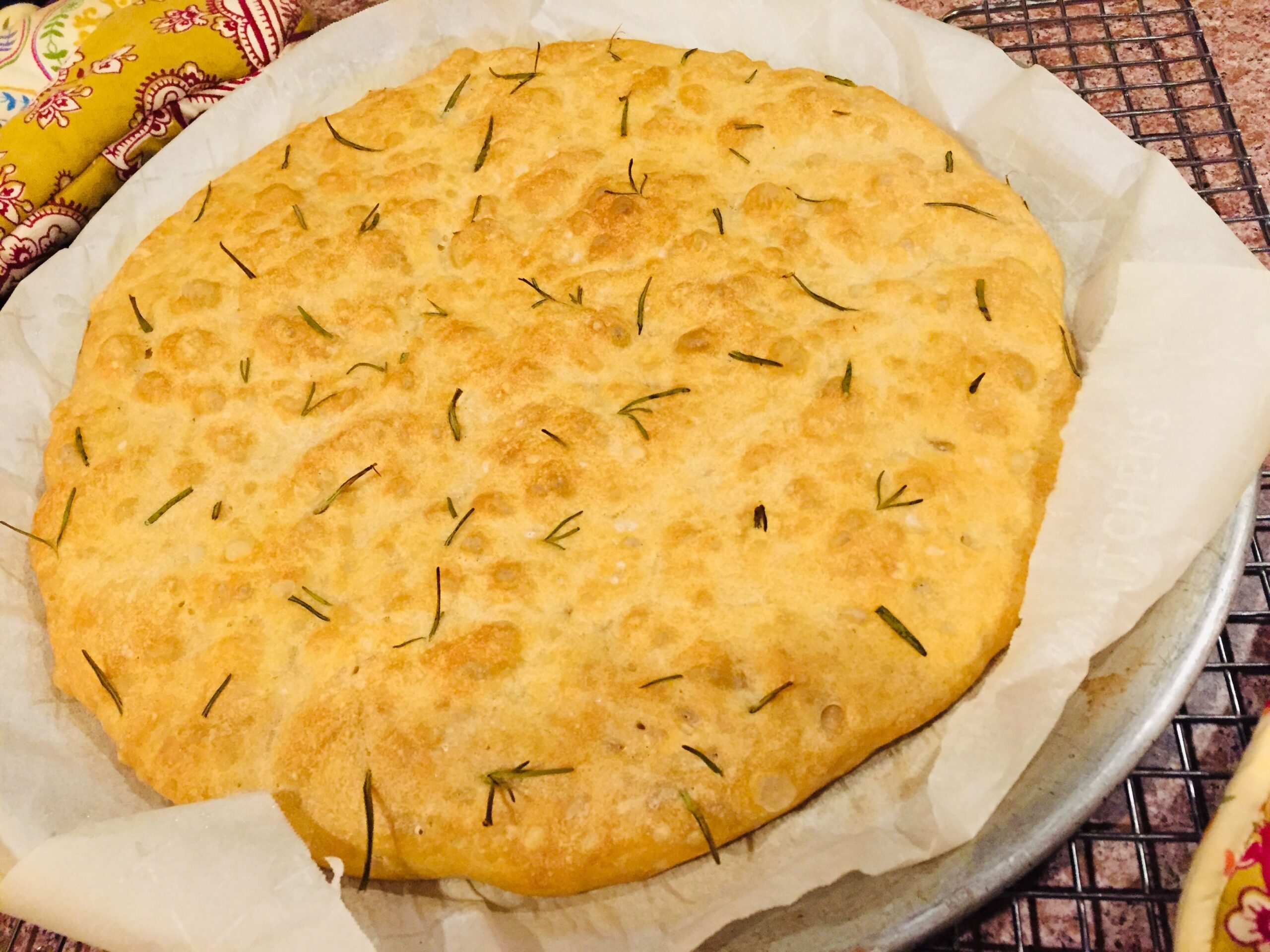
A day at home with no plans is blissful for me.
Now I can get up and go with the best of them, but seriously you can put me on house arrest for a good two weeks and I will be just fine. As long as I can cook, bake, read, play the piano, organize some things and watch trashy TV it’s all good in the hood for the Jersey Girl.
Our culture of never-ending plans, appointments, commitments and outings kills my spirit.
So I have encountered great insane joy when I have had the time to delve into this awesome book that has found its way into my collection: “Polpo: A Venetian Cookbook (Of Sorts).” There are so many interesting recipes, and as soon as my glistening eyes caught sight of this focaccia recipe I read it from top to bottom and then once more. I declared this focaccia must be mine.
Isn’t it totally gorgeous? I’ve made the focaccia twice. It’s a very easy bread to conquer. It just takes time to rest and get its groove on. My son – who is obsessed with rosemary (yay) – likes to assist with making the dough, especially the part where we put the dimples in the dough and place the rosemary leaves and sprinkle with a little sea salt.
I love making this with him! The bread lasts for several days if stored in an airtight container. It’s so good with pasta e fagioli and chicken cacciatore.
The next time you have some spare time on your hands and you want to get into in your kitchen, I hope you give this amazing recipe a try!
Rosemary Focaccia
Course: Bread, AppetizersCuisine: ItalianDifficulty: Advanced16
servings3
hours1
hourIngredients
- For one loaf
25 g fresh yeast (or 2 x 7g fast-action yeast)
650 ml warm water
1 kg strong white bread flour (4 cups)
25 g fine salt (5 tsp.)
Extra virgin olive oil
Flaky sea salt
1 good handful of small rosemary sprigs
Directions
- In a large bowl, mix the fresh or dried yeast into the water and whisk until the yeast is dissolved. Add half of the strong white bread flour and use a hand whisk to beat till smooth. At this stage, your mixture will still be very wet, like a pancake batter. Leave, covered with clingfilm, until it has risen but keep a close eye on the ‘tide line.’ When the mixture starts to fall again (about 1 hour in a warm kitchen, longer in a cooler one), knead in the other 500 g of strong white bread flour and the fine salt. Work everything together until there are no lumps.
- Transfer the dough to a warm, oiled, clean bowl and leave it to rise for at least another hour. Your dough will be getting full of itself by now so you need to knock it back and teach it some discipline. Repeat this step (rising and knocking back) twice more only if using fresh yeast. Now your dough is ready to use or it can be covered and refrigerated overnight.
- Oil your hands and a greaseproof-paper-lined baking tray. Take the dough and manipulate into a large dome. Place on the tray, smear a generous amount of olive oil over the top, cover in clingfilm and leave to rise in a warm place.
- Preheat an oven to 200 degrees Celsius/Gas 6 (or 400 degrees Fahrenheit). When the dough has increased in size by one third, remove the clingfilm, oil your hands and lightly press your fingers into the dough so that you leave dimples in the surface. Scatter with sea salt and rosemary, pushing the sprigs into the dough.

- Bake the dough in the preheated oven until golden brown (about 1 hour but you should check at 45 minutes). To test the bread’s ‘doneness’, tap it on the bottom – it should sound hollow.




